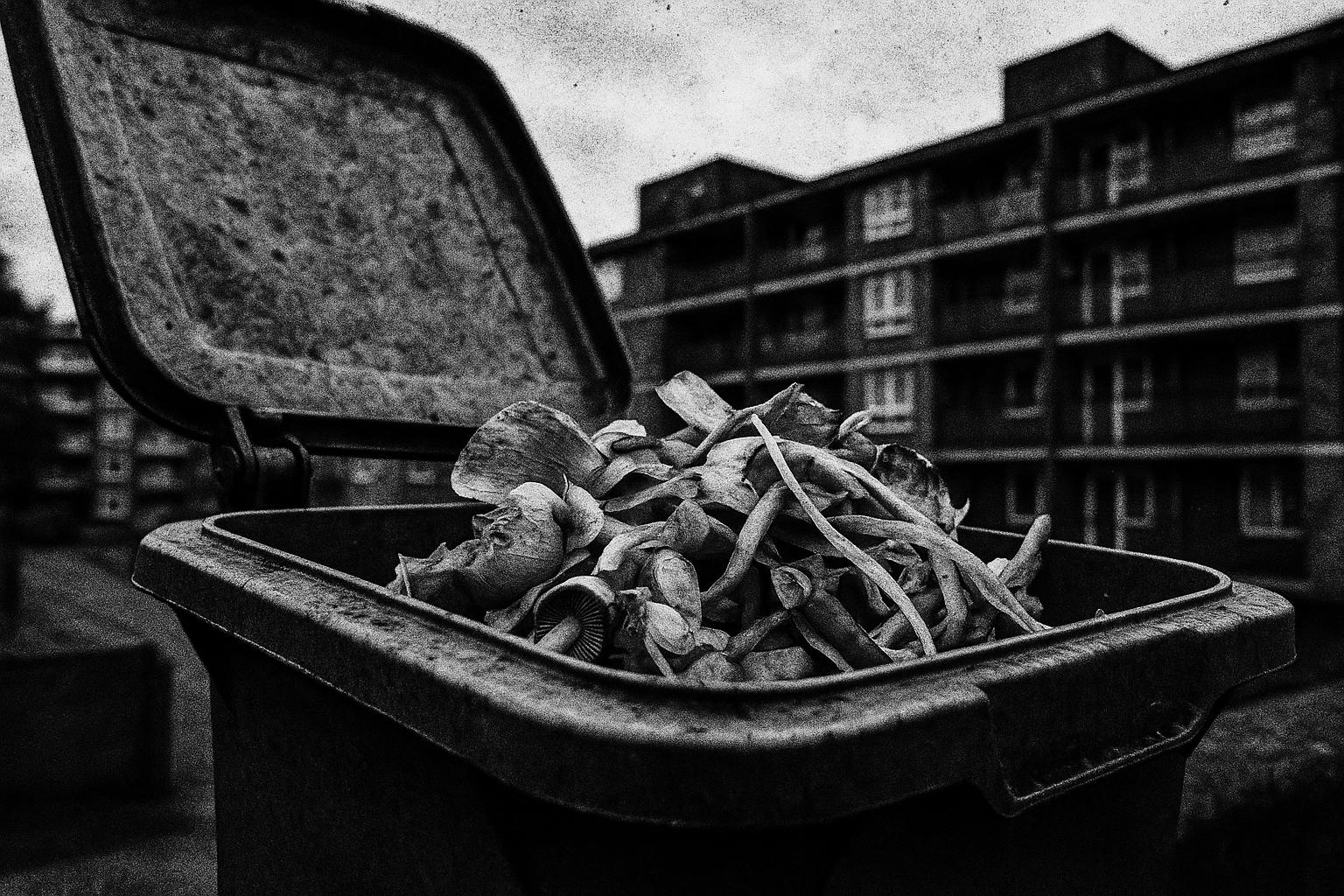Food waste should not be treated as ordinary black-bag rubbish. Much of what Londoners put in their general waste is incinerated, and because typical food waste is overwhelmingly water — often 60–80% by weight — burning it is inefficient and environmentally perverse: as one commentator put it, it is a bit like burning soup. Turning those scraps instead into compost or digesting them for biogas keeps nutrients in the soil, cuts CO₂ emissions and closes loops that incineration destroys. According to recent reporting in the Evening Standard, composting at home is ideal where space allows; otherwise residents should take advantage of kerbside collections. (This approach is backed by technical data showing high moisture content in food waste, which lowers its heating value and makes thermal recovery an inferior option for organics.) [1], [5], [4]
Composting and anaerobic digestion offer different but complementary routes to extract value from organics. Home composting and community schemes produce nutrient‑rich soil that benefits gardens and allotments; larger‑scale anaerobic digestion converts wet biomass into methane‑rich biogas and a nutrient‑dense digestate that can be used on land. Government guidance highlights that digesting one tonne of food waste rather than sending it to landfill can save roughly 0.5–1 tonne of CO₂ equivalent, and that biogas can be used for heat, upgraded to biomethane for the gas grid, or employed as a transport fuel. These are practical pathways to recover energy and close nutrient loops across the city. [1], [6], [7]
Practical access to separate food collections is improving across London. A July 2024 Q&A on London.gov states that 26 of the capital’s 33 boroughs now provide kerbside food waste collections, with some councils combining food and garden waste services. The same guidance lists Barnet, Barking and Dagenham, Havering, Newham and Redbridge as not yet operating dedicated services, and notes planned roll‑outs in Hammersmith & Fulham and Kensington & Chelsea. All boroughs must also comply with the national Simpler Recycling rules by April 2026, which is expected to accelerate standardised organic collections. [2]
The scale of the problem helps explain why these changes matter. London has become increasingly reliant on incineration — one London Assembly inquiry warned that more than two million tonnes of waste were being sent to energy‑from‑waste plants in a single year and urged that biodegradable and recyclable material be kept out of furnaces. Academic analysis of residual waste management corroborates that incineration with energy recovery is the dominant treatment for residual municipal waste in the capital, and flags contractual “lock‑ins” and limited transparency that steer materials towards combustion rather than reuse or recovery. Those reports argue energy‑from‑waste should be a last resort, not the default destination for organics. [3], [4]
There are technical reasons why food belongs in composters or digesters rather than the incinerator. Scientific reviews of food‑waste properties show household and commercial food wastes are typically high in moisture — many UK measurements cluster in the mid‑60s to mid‑70s percent range. High water content lowers calorific value and complicates thermal conversion, often making pretreatment necessary for any efficient energy recovery. In short, the material characteristics of food waste make biological processes such as composting or anaerobic digestion the better fit. [5], [1]
Anaerobic digestion merits particular attention for urban waste planners. Government guidance outlines AD’s versatility — from on‑farm digesters to large municipal plants — and stresses its dual benefit of producing renewable energy and a useful soil‑improving digestate. Where collected and processed at scale, AD can substantially reduce greenhouse‑gas emissions compared with landfill or incineration and contributes to a circular‑economy approach to organic residues. Local authorities and utilities are increasingly viewing AD as a core part of their organics strategies. [6]
For households wanting to act now, there are straightforward options. The Royal Horticultural Society advises that where gardens exist, a simple compost bin, wormery or bokashi system can convert kitchen scraps into valuable compost; for those on balconies or without outdoor space, small sealed bins, community composting projects and donating peelings to allotmenteers are practical alternatives. The RHS and local outreach groups also emphasise behaviour changes to reduce waste in the first place, and signpost schemes such as Love Food Hate Waste. Where kerbside food collections operate, residents should use them — they divert organics from black bins and deliver material that can be composted or digested rather than incinerated. [7], [1]
Policy and procurement will decide how fast London shifts away from burning recoverable waste. Researchers have urged greater transparency about the fate of residual waste, the removal of contractual barriers that lock councils into long‑term incinerator agreements, and stronger borough‑level collection services for food waste so valuable materials feed a circular economy rather than furnaces. With the majority of boroughs already offering separate food collections and statutory recycling rules coming into force, the window for change is now — but it will require coordinated action by councils, waste contractors and residents. [4], [3], [2]
For individual Londoners, the message is simple and immediate: reduce what you waste, compost what you can, and use your borough’s food‑waste collection if you have one. Doing so helps cut emissions, recovers nutrients for soil, and supports the broader shift away from incineration towards solutions that fit the biological nature of food waste. The tools exist; the challenge is to use them. [6], [7], [2]
📌 Reference Map:
##Reference Map:
- Paragraph 1 – [1], [5], [4]
- Paragraph 2 – [1], [6], [7]
- Paragraph 3 – [2]
- Paragraph 4 – [3], [4]
- Paragraph 5 – [5], [1]
- Paragraph 6 – [6]
- Paragraph 7 – [7], [1]
- Paragraph 8 – [4], [3], [2]
- Paragraph 9 – [6], [7], [2]
Source: Noah Wire Services
